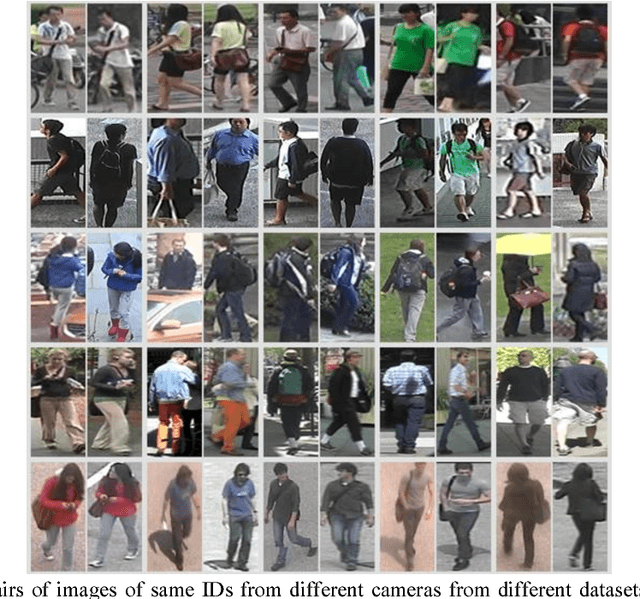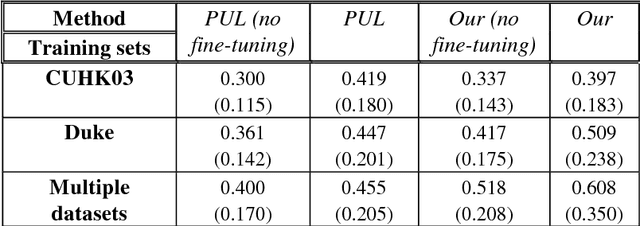Maxim Peterson
Improving Deep Models of Person Re-identification for Cross-Dataset Usage
Jul 23, 2018


Abstract:Person re-identification (Re-ID) is the task of matching humans across cameras with non-overlapping views that has important applications in visual surveillance. Like other computer vision tasks, this task has gained much with the utilization of deep learning methods. However, existing solutions based on deep learning are usually trained and tested on samples taken from same datasets, while in practice one need to deploy Re-ID systems for new sets of cameras for which labeled data is unavailable. Here, we mitigate this problem for one state-of-the-art model, namely, metric embedding trained with the use of the triplet loss function, although our results can be extended to other models. The contribution of our work consists in developing a method of training the model on multiple datasets, and a method for its online practically unsupervised fine-tuning. These methods yield up to 19.1% improvement in Rank-1 score in the cross-dataset evaluation.
Vision System for AGI: Problems and Directions
Jul 10, 2018Abstract:What frameworks and architectures are necessary to create a vision system for AGI? In this paper, we propose a formal model that states the task of perception within AGI. We show the role of discriminative and generative models in achieving efficient and general solution of this task, thus specifying the task in more detail. We discuss some existing generative and discriminative models and demonstrate their insufficiency for our purposes. Finally, we discuss some architectural dilemmas and open questions.
 Add to Chrome
Add to Chrome Add to Firefox
Add to Firefox Add to Edge
Add to Edge